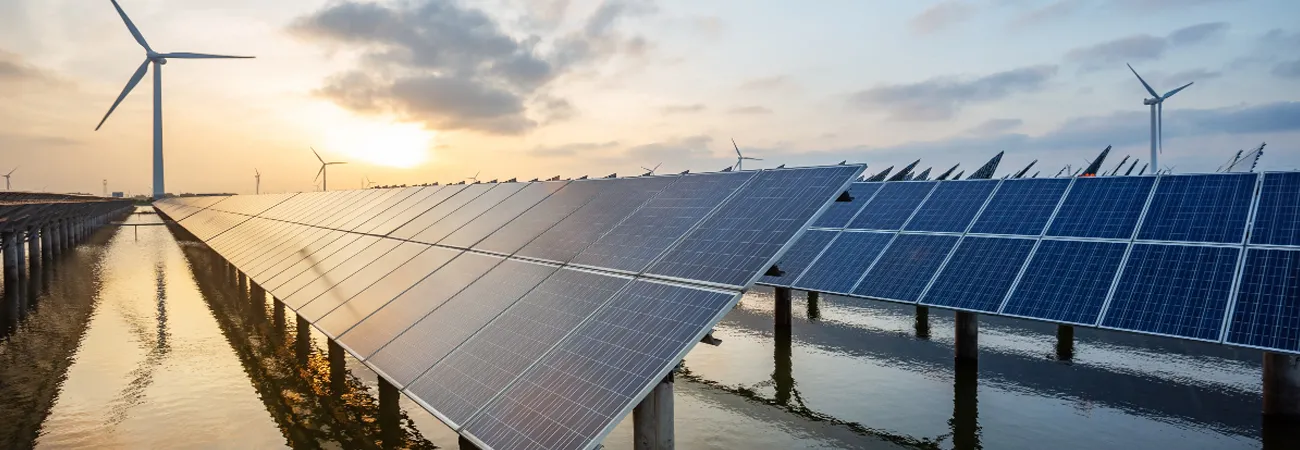i ECONOMY
Balochistan has enormous potential in the renewable energy sector, which unfortunately remains untapped so far to help the country tackle power shortages as well as the high cost of electricity, WealthPK reports. Pakistanis have to bear the brunt of high electricity bills each month with additions on a monthly basis, as the country still relies heavily on fuels like coal, imported gas, and furnace oil, whose prices have increased enormously in recent years due to local and international factors. As the government announced to exploit the huge resources of renewable energy time as again, the actual work on ground didn't match the announcements, and the share of renewable energy in the energy mix still remains far below the desired target.
Balochistan is home to geothermal energy with huge steam zones in Chaghi, Nokandi, and Taftan. There are different spots where heated water comes out and goes up to a considerable height. As per the report of the energy department of Balochistan, mud volcanoes, hot geothermal fluids alongside dormant volcanoes, hot magmatic waters at 150 degrees centigrade in Chaghi and volcanic arc in the province can be used for geothermal energy. Currently, electricity generation through geothermal is very low.
Balochistan is endowed with an 800km coastline with six corridors from Gwadar to Makran, Sibi, Turbat, Zhob, Quetta, and Naseerabad, with main points Nokandi, Hoshab, Panjgor Masting, Fasht, Quetta Zhob, Chaman. It enables the province to produce 146,145MWs from wind power. Moreover, the wind travels at high velocities in this southwestern province, which is suitable for generating huge amounts of electricity. In addition, windmill technology can be employed for pumping out water for irrigation and grinding grain in the fields which can help reduce people's dependence on electricity.
Moreover, wind energy is comparatively cheaper than the thermal energy, as a turbine of 100MW can cost $50 million, which is cheapest than the thermal. Solar radiation in area-wise this largest province of Pakistan is the highest compared to other parts of the country, as the annual average mean daily solar radiation is at 5.9-6.2 kWh/m2/day. The province has prudent average sunshine hours where average solar radiation is 5.9 to 6.2 kWh/m. The province has a daily insolation of 19 to 20 MJ/m2/day. It has six corridors from Gwadar to Makran, Sibi, Turbat, Zhob, Quetta, Makran, and Naseerabad where Sibi and Turbat regions have sun radiation of 5.79 kWh/m, Quetta 5.72, Naseerabad 5.67, Zhob 5.6, Kalat 5.51 and Makran 5.15 kWh/m² respectively. The average duration of radiation is 8 to 10 hours.
Comparatively, the cost of solar energy is less than that of conventional energy. Its price is PKR7.98 per kWh, while the price of conventional energy is Rs20.79 per kWh. As per the estimate of the Power Division, Balochistan can mitigate 126,000 metric tons of Co2 if 100 percent homes in the province are polarized. Balochistan's coast is an ideal location for tidal energy. Makran, Gwadar, Ormara, Sonmiani Beach and Kalmat coastal sites have a huge potential to produce cheap electricity. The tides in these areas are 3 to 5 meters above the mean level that is enough for generating power. By using the tapered channel methodology and by constructing grid-based or off-grid-based power stations, the NIO Pakistan has estimated that the extraction energy along the Indus delta creeks and Makran can generate 1100MW energy.
Credit: Independent News Pakistan (INP)









